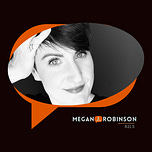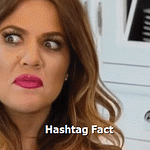Welcome to Creative\\Proofing, a space for hopeful, creative people learning to live wisely. This newsletter explores the process and experience of formation: uncovering our true selves, tapping into our imaginations, and doing what matters most.
First, I wanted to take a moment to say welcome and thank you to new subscribers for signing up for Creative\\Proofing. I’m so glad to find others interested in exploring these big ideas of life, the universe, and everything, and I’m thrilled to have you join the journey with me. And a big thank you to long-time readers as well - I appreciate you being here!
Second, if you want to explore the resources I engaged in the process of writing this issue, be sure to check out 10 Curations for February 2023.
ASSUMED AUDIENCE
anyone trying to wrap their head around the system that we call higher education in America and how it helps describe the water in which we swim
A Tale of Two Cults
Aw’right, aw’right, aw’right, settle in, folks, and grab yourself a beverage, cuz this is a long one.
In delving deeper into the details of higher education, I discovered that I really want to zoom out. Like way, way far out. I’m interested in exploring how we got here, and what the confluence of certain trends and dynamics means for where we go next. So I thought we’d talk about cults…sort of.
The Cult of Capital
I’ve recently been digging into the work of German sociologist Hartmut Rosa, who writes on the evolution of the modern era and modern society. In his book The Uncontrollability of the World, he observes that, as the modern era has progressed, we have developed an overriding, functionally immutable compulsion: to always act in such a way that our share of the world is increased. We want to expand the resources and materials available to us at any given time.
Money is the obvious measure of our “reach” - the more money we have available to us, the more material goods or experiences of the world we can buy. But we see this in other ways too. Rosa attributes this compulsion to a “certain practical attitude” underlying our cognitive worldviews and conscious assumptions about how “reality” works. This foundational attitude of late modernity—which is to say, our attitude—is the desire that we can “make the world controllable at every level—individual, cultural, institutional, and structural.” By controllable, Rosa means making the world
knowable (such as through science),
accessible (physically within reach),
manageable (governing how things happen), and
useful (putting things to work).1
He points out that this attitude has the effect of reducing each and every encounter we have with the world around us to a “point of aggression, […] a series of objects that we have to know, attain, conquer, master, or exploit.”2

When the early modern era began in the 1500-1800s, growth, acceleration, and innovation were in the air; they offered a promise that life and its material conditions would always get better, a linear process of escalation that brings increasing benefits to each successive generation. Rosa calls this dynamic stabilization, the process of “constant economic growth, technological acceleration, and cultural innovation.“ We currently experience this dynamic stabilization as acceleration in the form of constant newness—new phones, new apps, new jobs, new opportunities, new trends, new, new, new. In the words of a certain Silicone Valley inhabitant, we incessantly “move fast and break things.” We are very familiar with this process, especially because we no longer perceive it as a promise, but as an “apocalyptic, claustrophobic mess.”3 We race toward the next thing, ever breathless and always running out of time.
This “structural reality” of dynamic stabilization is the fabric of late modern Western society. But Rosa says that if we only understand this reality as an “increasing demand—higher, faster, farther,” we mistake this as a lust for more, when it is actually driven by “the fear of having less and less. It is never enough not because we are insatiable, but because we are, always and everywhere, moving down the escalator.”4 Essentially, the vision of “the good life”—what makes life interesting, significant, purposeful, and worth living—has gradually become hollowed out. The material forms of a “good life” persist, but any deeper substance that can’t be made visible, accessible, manageable, or useful has been cut away and scraped off.
In commenting on Rosa’s work, theologian Andrew Root observes that one way to deal with this acceleration and loss of time is to become obsessed with resources, that is, “harvesting and storing a source or supply that is available to us and by which a benefit is produced that has some utility for us.”5 We think and hope that by doing this, we can shore up up our lives against the (inevitable) descent down the escalator, surviving by winning the resources and feeling more secure. I call this resource obsession the “cult of capital,” our pursuit of those social, economic, and political resources that are available, accessible, and attainable so that we can at least stop moving down the escalator, and hopefully move up at some point in the future.
The Cult of Smart
So what does all this talk about acceleration and resources and controlling the world have to do with higher ed?
In the first issue of this series, I started exploring the landscape of higher ed. We traced the last sixty years or so of educational policy and practice in the U.S. I pointed out that, though formal education has been seen as cultivating both civic and vocational preparedness in citizens, in practice it has become singularly focused on developing new entrants into the global labor market.
We ended that issue on a quote by Kevin Carey, who observes that, in navigating our demographic and cultural changes, colleges and universities
won’t just be going along with the strengthening alignment of the higher education experience with the labor market. They will be actively promoting it.6
More than ever before, education will march in lock-step with employment, driven by market forces to offer disciplines, degrees, training, and credentials that enable consumer capitalism to continue growing the economy and “maximizing profits” for shareholders (but not workers).
But the thing is, a college degree is no longer doing the same heavy lifting that it used to 20 or 30 years ago. A recent NPR article observes that
the financial return from a bachelor's degree is softening, even as the price, and the average debt into which it plunges students, remain high. But high school graduates have been so effectively encouraged to get a bachelor's that high-paid jobs requiring shorter and less expensive training are going unfilled. This affects those students and also poses a real threat to the economy.7
In his book The Cult of Smart, Freddie deBoer bucks against the idea that education is for everyone. He points out that some people have neither the desire nor the capacity to pursue more education, and “that there is such a thing as a bright student who just isn’t made for college.” He further laments that our “current social contract leaves many of them with few paths to financial security and personal success.”8 The “cult of smart” is the (perhaps primarily Western) insistence on assuming that formal higher education is an equal opportunity for everyone, enabling us to collectively secure the futures of both individuals and the economy.
We feel ourselves sliding further down the escalator these days.
So why do we keep forcing people onto the same educational and professional pathway, even as that pathway becomes ever more riddled with potholes?
In Lower Ed, her influential study of for-profit colleges, Tressie McMillan Cottom also explores the dynamics and realities of higher education in general. Cottom points out that by the 1980s, the U.S. shifted “away from understanding higher education as something that was important and good for society as a whole. [This] made the politics of financializing college tuition a sensible public choice.”9 At every level—locally, privately, publicly, nationally—she points out that we have told each other and our children that “higher education was a private good with social rewards. Based on this, students should invest even as colleges increasingly shifted the costs of attendance to students. Investment implies risks and rewards.”10
Because just about everyone who goes to college these days has to take out loans, we accept the burden of repayment later (usually called “debt”) by framing it as “an investment” in our future. But as Anne Helen Peterson points out in her series The Master’s Trap, this debt that we convince ourselves is an investment, these loans actually
decrease any degree’s “wealth building” function — and, in so doing, decrease their ability to anchor the recipient and subsequent generations to the middle class. [In taking out student loans,] you will not have the security, the ability to save, or the ability to accumulate wealth in the same manner as your peers who did not have to take out significant loans to get there.11
And despite all this, we have (at least until recently) convinced ourselves that the risk is worth it.
Let’s return a moment to Rosa and Root’s observations. As members of late modern society, we all have this “resource harvesting paradigm” that we implicitly apply to every decision, opportunity, or potential good. We all ask ourselves, “Will this thing help me pursue the good life that potentially exists in the future? Will it help me control the world I encounter?” What future, we’re not exactly sure, but education and subsequent employment seem to make it far more attainable.
The existential costs of losing (or never gaining) access to these future-securing resources feel far too great.
When Cults Collide
So, on the one hand, we have the “cult of smart” insisting that the best measure of individual economic, political, and social value is a college degree, at the very least a bachelor’s degree. On the other hand, we have the “cult of capital” seeking to shore up any and all social, economic, and political resources that could possibly get us off the “down” escalator, or help us move toward a future that we can’t fully define. And in the middle we have declining population demographics, degrees that are softening in value, a glutted labor market, and the incessant acceleration of time and culture.
Not exactly a recipe for living our best life now.
We are all experiencing a collective “crisis of realization,” brought on by a global pandemic, escalating stress fractures in our social, economic, and political institutions, and personal fears about surviving (let alone thriving) in an uncertain, unknown future. For a brief period of time, several generations of U.S. citizens experienced a happy accident at the intersection of these two cults of smart and capital, where it actually worked for them.
And in the great tradition of human beings always and everywhere, they assumed it could forever work that way. Just input the right variables, torque the correct levers, calculate the best trajectory, and hey presto! There’s the good life. And what we are realizing (again, anew) is that there exist things beyond our control that no resource can ever protect or secure. We cannot plan for every contingency.
This all sounds really gloomy and a bit hopeless, I know, and it’s worth taking a moment to acknowledge that we’ve been dealt a shit hand that’s going to be hard to play. And it’s easy to say, “Well, if I were in charge, this would fix it!” And maybe some of us will be lucky enough, or crazy enough, to be in positions that can affect systemic changes, but odds are, most of us will just be doing our best right where we are, day in and day out.
I recently read about anthropologists studying the language of the Aymara people of Bolivia, Peru, and northern Chile. An interesting feature of their language was discovered in how they refer to past and future: the past is nayra, which translates to “eye,” “sight,” or “front.” The future is q’ipa, which translates to “behind,” “the back.” The Aymara reason that the past is complete and known, as clearly as we can see in front of us, while the future is unknown, effectively as hidden as whatever lies behind us.12 We late moderns do not, to put it mildly, think of past and future this way.
If Rosa’s diagnosis of our time is correct (and I think he’s on to something), we’ve been living in a paradigm that either discards or idolizes the past and fixates on the future, effectively ignoring the present. But here’s the thing: the present is what we’ve got to work with. The present is the only place where we can make sense of our own past in context of the world around us. The present is where we can begin to figure out our next step. A favorite yoga instructor always opens his classes with the call to “presence yourself” on the mat. It’s one of the things I appreciate most about practicing yoga: when I’m on the mat, in order to practice effectively, I can’t be anywhere else. If I think about a perfect future pose or compare myself to how I did in the past, I push myself into unhealthy contortions that derail any possibility of growth. I can only be present to that moment, this practice.
And I think that, in order to break this spell of acceleration, to drop out of warp speed, as it were, we’re going to have to help each other learn how to take care of our present and cultivate our presence in it. It’s a place to start.
Let’s be hopeful, creative, and wise—together.
Shalom,
Megan.
Hey!
As fascinating as all these ideas are, I’m a big believer in what Duke Ellington sings: It don’t mean a thing if it ain’t got that swing.
What do we do with this new knowledge? How does it make a difference for who we are and want to become?
I heard this years ago and I’ve never forgotten it:
Character is action; action is character.
What we do is who we are. Likewise, we discover who we are by what we do. #brainteaser
I know that I frequently struggle to align my everyday actions with my deepest values. It’s taken me several years of trial and error to discern tools and rhythms that help me connect with the person I want to be.
If you’re a preacher or speaker, a creator, an adult learner, or an expert with knowledge and skills you want to share, I want to help you make sense of what you know and do so that you can take meaningful action in your life. That’s why I’m building Notion-based tools to help you do just that.
Would you have a few minutes to provide some insight about your current frustrations and goals in taking meaningful action? Your feedback helps me design resources that will truly support you in uncovering your true self, tapping into your imagination, and doing what matters most to you.
If you’re constantly feeling the suspicion that your actions in the world don’t fully reflect who you are or want to be, I’d love to hear from you!
Just click on the link below. This survey should take ten minutes or less to complete.
Thank you so much!
Rosa, The Uncontrollability of the World, pp. 15-16
ibid., p. 4
ibid., pp. 9-10
ibid., pp. 9-10
Andrew Root, “Time, famine, resource obsession, and the good life,” TheologyCon
Kevin Carey, “The Incredible Shrinking Future of College,” Vox
John Marcus, “While many students aim for college, high-paying trade jobs sit empty,” NPR
Freddie deBoer, The Cult of Smart, pp. 14-15
Tressie McMillan Cottom, Lower Ed: The Troubling Rise of For-Profit Colleges in the New Economy, p. 133
ibid., p. 134
Anne Helen Peterson, “The Master’s Trap,” Culture Study
MaryAnn McKibben Dana, Hope: A User’s Manual, p. 14














Share this post